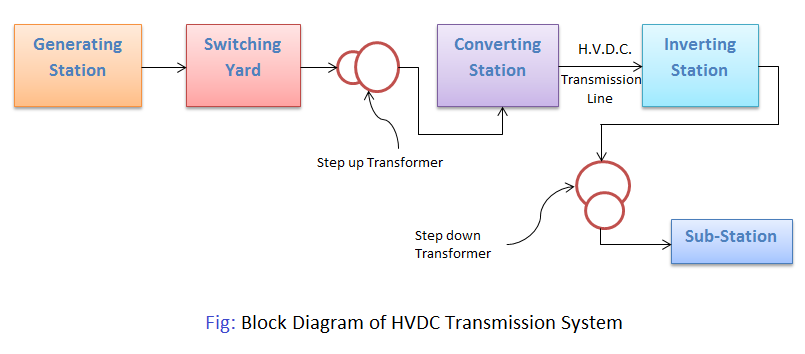HVDC Transmission System:
It stands for High Voltage Direct Current. HVDC of large power at a long distance can be transmitted comparatively easily. The block diagram of the HVDC Transmission System is given below:

The sub-station is an intermediate between the generating sub-station and the consumer’s house. From the sub-station, the electrical power is transformed to the place where there is a demand for electrical power, termed as the Distribution Transformer sub-station. The distribution sub-station stepped down the voltages at 415 volts/240 volts at rated power. From the output of the distribution sub-station, the electrical power is taken through electrical lines to the consumer’s house is known as the Distribution system. The distribution system is a three-phase four system to feed both power loads and lighting loads in the case of AC distributions.
For DC distribution, after the distribution transformer, a rectifier is installed to convert AC to DC. This wire DC system is used to feed both power as well as Lighting loads in DC distribution. When electrical energy is transmitted in large quantity from the power station to the load center at a comparatively higher voltage is called Transmission. When electrical energy is required to distribute to different types of consumers is known as Distribution.
In our country, for the transmission and distribution of electrical energy, we adopt overhead and underground systems. For a three-phase, 415-volt low tension (LT) distribution line is always done by four wires not by three wires to obtain two sets of voltage in low and medium voltage required for the consumers using different types of lamps, fans household appliances and for the use of power load. One phase wire and one neutral wire is required for domestic lighting loads and three number phase wires are needed for the power loads.